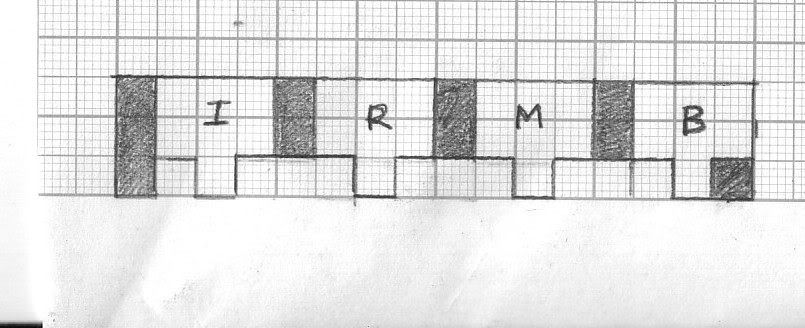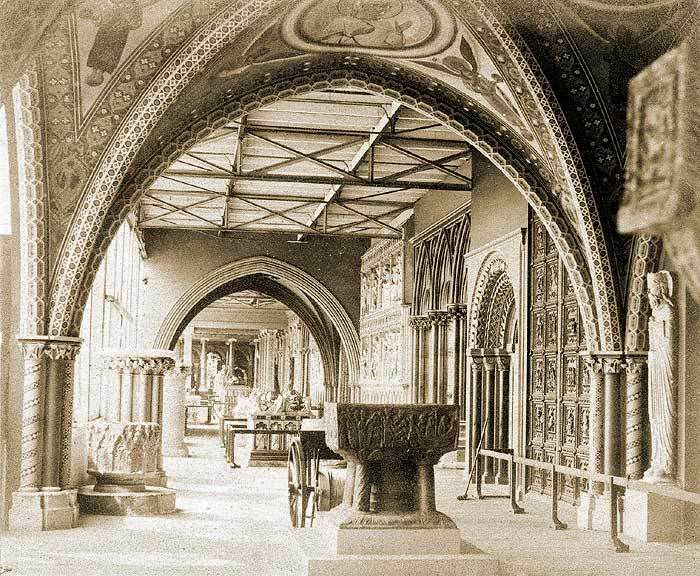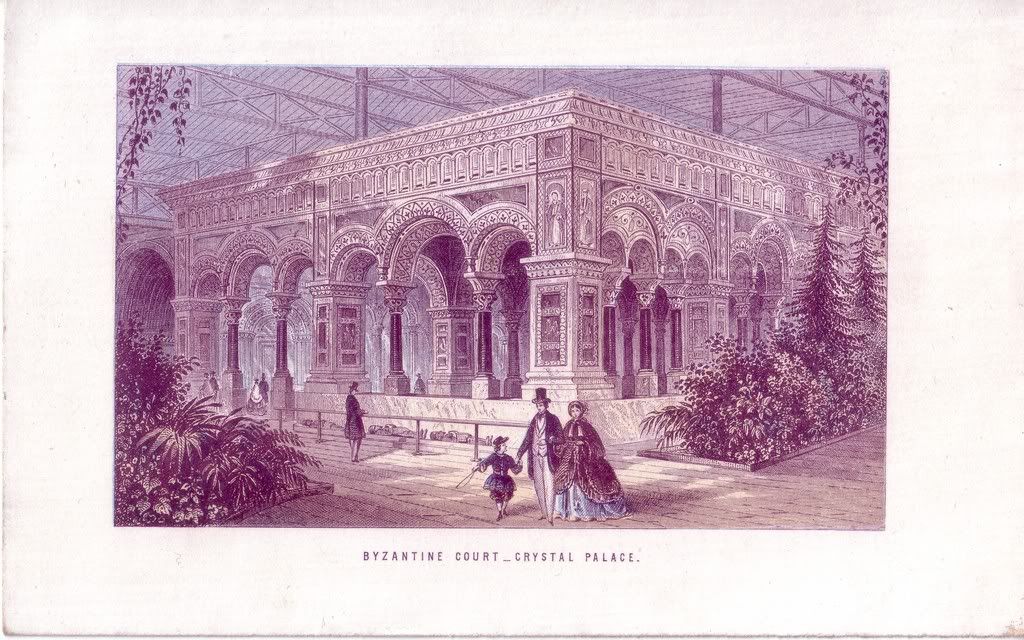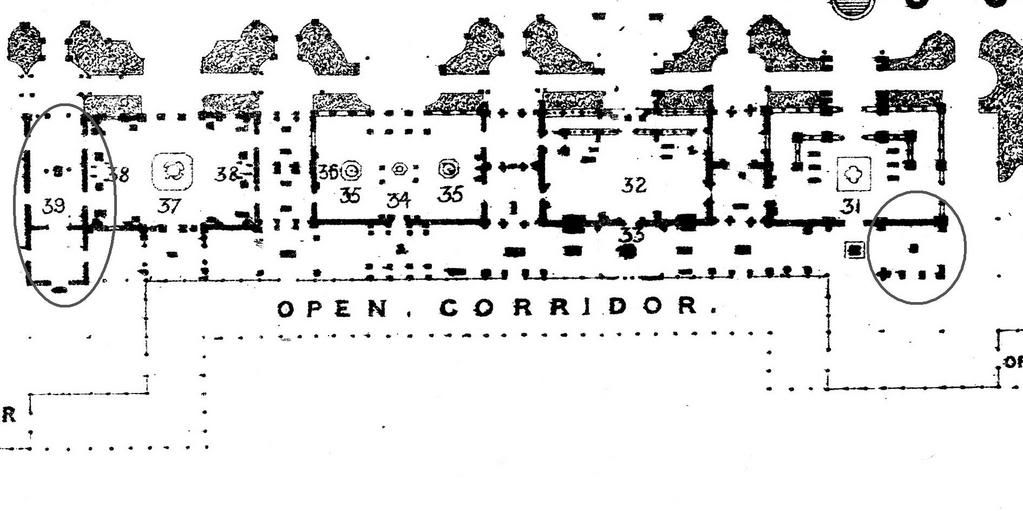Thanks for the info, though it doesn't really answer my question. Please compare these plans and see if you think there might be another vestibule to the south of the Irish:
I have to say that I haven't considered the layout in this way.
The handbooks and the guide were written by seperate writers, and in a rush before the opening. It still takes some detective work to establish exactly what was present, and they were never intended to replace an actual visit. Reading them means having to have to wade through huge chunks of art history, with just the odd, "and on the right" as a clue.
I have made this plan to clarify.

I have shaded all the areas called vestibules, and the initials stand for the courts. I=Italian, R=Renaissance, M=Mediaeval, B=Byzantine. The Nave is above, the park below.
These courts all had portico's, including the Byzantine, some more enclosed than others, and all marked on the map of the whole building by just the column bases at the corners. The boxes marked with a cross in the handbook plans, shows that they had "vaulted" ceilings.

Vaulted ceiling.
The Irish Vestubule and the portico of the Byzantine Court next to it, both had vaulted ceilings, and as you can see in the image I posted of the Irish vestible the east wall was continuous. With two very similar structures right next to each other, it is up to both you and the writers of the guide to decide for yourself if you want to call it a portico or vestibule, I personally would consider it as the same portico that was built for each of the four North-east architectural Courts. As you can see in the Delamotte image below, these distinctions would not have been so apparent to the visitor.

Looking from the Irish Vestibule, through the portico of the Byzantine Court, the gallery, the portico of the Mediaeval Court, the columns of the potico of the Renaissance Court are just visible beyond. To a visitor it would probably just look like "the gallery."
The Plan of the whole building shows no other structures north of the Byzantine Court, reflecting the same layout down the side of the Alhambra Court opposite.

This Nelson print is unusual in showing the southern entrance to the Irish Vestibule, the dark arch on the far left flush with the rest of the facade.
The Delamotte photo must have been taken after the great organ of 1857 had been installed, so what was that small one doing in the south transept? Could it have been an organ used for concerts before 1857 and/or the one that ended up in the Concert Room?
Maybe, it certainly must have served some purpose, and I doubt there would be much point converting a free standing organ into something else later. I seem to remember that Joseph Paxton initially felt that brass bands would be enough musical provision. This attitude was probably motivated by the need to make the sober distinction between the restrained respectability of the Crystal Palace and that provided in the less reputable pleasure gardens of before, all necessary to avoid commercial failure. Which is probably why this small organ was a tentative afterthought. All pure guesswork of course. I work from the same sources availiable to yourself.
Looking in "The Musical Life of the Crystal Palace" page 156, it reads "The Concert room Organ which was installed with the completion of the Concert Room in 1868 was also built by Walker." I recommend you get a copy.






